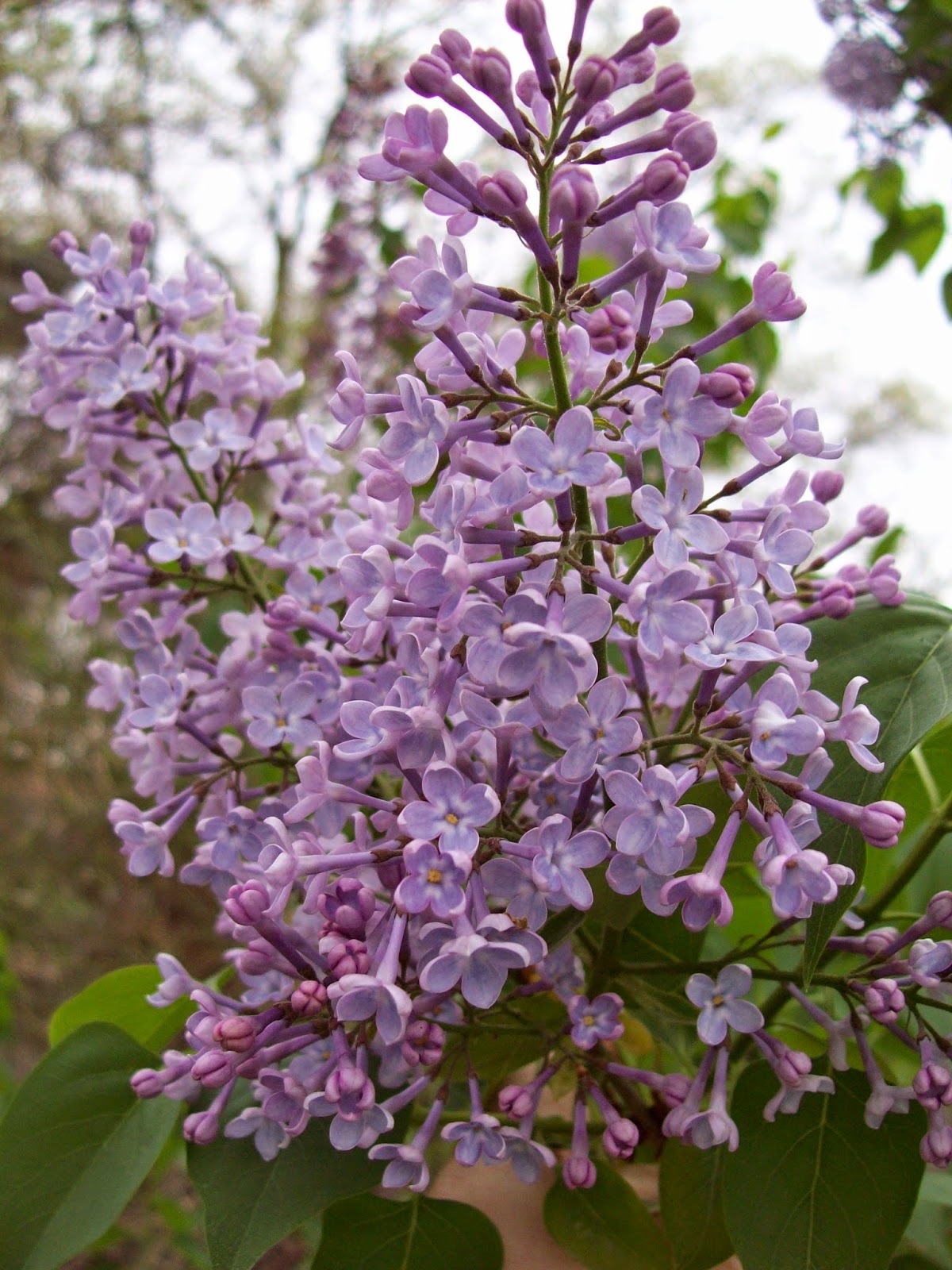 |
| Lilac |
The spring chores are really coming together and getting done this season. Our third rain barrel was completed Easter Sunday and partially filled with the intermittent sprinkles on Monday. All the roses are finally pruned and I managed to fill four trash barrels with the thorny trimmings. My community has a free yard waste pick up this Friday, so I've been busy mincing up my pile of rose prunings to get them out of the yard. The healthy looking pruned roses are also starting to fill out nicely with their new leaves.
 |
| Fothergilla major "Mt. Airy" |
Indoors, I started a tray each of Red Milkweed (Asclepias incarnata) seeds and Butterflyweed (Asclepias tuberosa). The Monarch Butterfly populations have been decreasing dramatically (90%) due to habitat destruction as well as herbicide elimination of milkweed plants in agricultural fields. Mayor Slay of Saint Louis has announced his program, "Milkweed for Monarchs," in conjunction with the St. Louis Zoo, Missouri Botanical Garden, Forest Park Forever and the Missouri Dept. of Conservation, to plant milkweed at 50 police & fire stations, as well as other public gardens and encourage 200 residential gardeners to plant milkweed also. I figure I can do my part one county over and try to get a patch of milkweed growing too. Monarchs lay their eggs specifically on the milkweed plant, so it is crucial that there are some in their migratory ecosystem.
I also started a few dozen pots with seeds of Lamb's ears (Stachys lanata), catnip (Nepeta cataria), and some Black Hungarian peppers (Capsicum annuum). As you can tell my seed order from the Seed Savers Exchange http://www.seedsavers.org/ has arrived and I was hot to get some baby plants started. I'm thinking the lamb's ears will be a nice gray plant, (see post http://www.dustoffurthinkin.blogspot.com/2013/06/gray-goes-with-everything.html) to add to the garden. This winter killed the Dusty Miller and most of the Silver Brocade. I saved one small sprouting piece of the Silver Brocade in a peat pot hoping to transplant it to a better location in the garden.
I recently attended a meeting of the Three Rivers Beekeepers in hopes of getting more information on bee favored garden plants. Bees in my area love the mint family plants, as well as lavenders and oregano. I also learned that given their short tongue many of the butterfly or hummingbird plants hold nectar too deep for the bees to reach. Bees are also more attracted to large clump plantings of the same nectar plant rather than individual or scattered plantings. Interesting to find out bees are more like Costco shoppers when in comes to sourcing nectar. I will be changing up the spring planting/garden plan to incorporate these new ideas.











